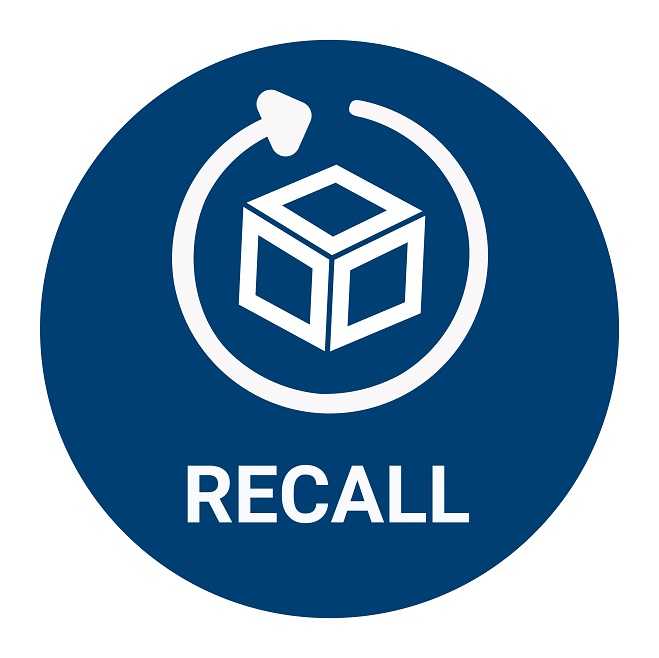What Is Safety Management Software?
Safety management software is a strong tool that allows firms to streamline their safety processes while also ensuring compliance with industry laws. It is a complete platform that integrates multiple safety management tasks such as incident reporting, risk assessment, hazard identification, and training management into a unified system, allowing enterprises to better manage their safety initiatives.
The program is intended to assist firms in establishing a proactive safety culture by delivering real-time data and analytics that can identify potential risks and help avoid accidents or incidents before they occur. It also allows firms to track and monitor safety performance, which provides useful information for improving safety protocols and lowering total risk.
Incident management is a crucial aspect of safety management software. It enables organizations to swiftly report and document events and near-misses, as well as explore the underlying causes. This allows firms to learn from their mistakes and prevent similar occurrences from occurring in the future. Another important feature of safety management software is risk assessment.
This feature enables businesses to detect potential dangers and analyze their risk level, allowing them to put preventive measures in place and prioritize safety initiatives. Furthermore, safety management software provides powerful training management features. It enables firms to build and assign training courses, track employee completion and certifications, and generate complete reports for compliance.
What Are The Recent Trends In Safety Management Software?
In recent years, safety management software has emerged as a crucial tool for enterprises of all kinds. With a greater emphasis on workplace safety and compliance, businesses are turning to technology to expedite and improve their safety management procedures. But, as technology evolves, what recent trends in safety management software should buyers be aware of?
1. Cloud-Based Solutions: One of the most significant trends in safety management software is the move to cloud-based solutions. This enables easy access and control of data from any place, removing the need for on-premise installations. Cloud-based solutions also provide scalability, cost-effectiveness, and real-time collaboration among team members.
2. Mobile Applications: As the use of smartphones and tablets grows, safety management software suppliers are also offering mobile applications that allow users to access and manage safety processes while on the go. This not only improves productivity but also communication and response time in the event of an emergency.
3. Predictive Analytics: Predictive analytics has gained popularity in safety management software. This technology employs data and algorithms to detect potential safety risks and forecast the likelihood of accidents or incidents. It enables firms to take proactive steps to avoid accidents and provide a safer work environment.
4. Integration With IoT And Wearables: The Internet of Things (IoT) is rapidly changing how businesses operate and manage safety. With the integration of IoT devices and wearables, safety management software can now monitor environmental conditions, track employee well-being, and even send real-time notifications in the event of a safety breach.
5. Emphasis On User Experience: Safety management software suppliers are now putting a premium on user experience. They are creating intuitive and user-friendly interfaces that require little training and can be easily adopted by all personnel, from upper management to front-line staff.
As the market for safety management software grows, buyers must stay current on the newest developments in order to select the best solution for their company. Businesses may use these improvements to improve their safety processes, decrease risks, and protect their most precious asset: their personnel.
Benefits Of Using Safety Management Software
Safety is of the utmost importance in any workplace, and as technology advances, there is an increasing demand for effective safety management systems. This is where the safety management software comes in. It is a strong tool that assists firms in complying with safety laws, identifying possible hazards, and tracking events and accidents.
Let's explore, we'll look at the advantages of utilizing safety management software and how it may help you enhance your overall safety standards.
1. Centralized Database: One of the key advantages of utilizing safety management software is that it provides a single database for storing all safety-related data. This reduces the need for several spreadsheets and paper-based solutions, making data more accessible and manageable. A consolidated database allows you to rapidly and precisely obtain any safety-related information, including incident reports, hazard assessments, and training records.
2. Real-Time Monitoring: Safety management software enables the real-time monitoring of safety activities and occurrences. This ensures that any safety concerns may be discovered and remedied quickly, lowering the risk of accidents and injuries. Real-time monitoring also allows firms to take corrective action promptly, preventing potential threats from becoming a larger problem.
3. Customizable Reports: Another advantage of safety management software is the ability to create customized reports. This enables firms to provide extensive reports on safety performance, incident patterns, and compliance status. These reports can be customized to match specific organizational needs, making it easier to correctly monitor and track safety performance.
4. Simplified Compliance: Using safety management software makes it easier to ensure compliance with safety laws. The program automatically tracks and updates safety rules, making it easier for firms to maintain compliance. It also sends out reminders and alerts for safety-related dates, making it easy to keep track of compliance obligations.
5. Data Analysis: Safety management software captures and maintains a vast amount of safety-related data that can then be analyzed. Organizations can use this study to uncover trends, patterns, and common elements that contribute to safety accidents. With this knowledge, organizations may make more informed decisions and take preventive measures to improve safety performance.
6. Streamlined Communication: Effective communication is critical in safety management, and safety management software may assist team members communicate more efficiently. It enables the easy exchange of safety-related information, such as danger assessments, safety recommendations, and training materials. This ensures that all employees understand their roles and responsibilities in keeping the workplace safe.
Important Factors To Consider While Purchasing Safety Management Software?
When it comes to choosing safety management software, there are numerous key elements to consider. This software is intended to assist firms streamline and enhance their safety operations, thus it is critical to choose the correct solution for your specific requirements.
To make an informed decision, here are the main elements to consider when selecting safety management software:
1. Compliance With Rules: One important issue to check is whether the program conforms with applicable safety rules. Compliance with laws such as OSHA and ISO is critical, as noncompliance can result in legal ramifications and fines. Before making a purchase, ensure that the program is compliant with all applicable rules.
2. Customization And Scalability: varied businesses have varied safety requirements, therefore it's critical to find software that can be tailored to your individual demands. Furthermore, the software should be scalable, which means it can adapt to your organization's changing needs and expand as your firm grows.
3. User-Friendly Interface: A user-friendly interface is essential for ensuring that employees can use the software and do their safety tasks efficiently. A convoluted or confusing interface can cause problems and slow program uptake. Look for a system that has a simple and intuitive interface and takes little training for staff to utilize efficiently.
4. Integration With Existing Systems: Safety management software should work easily with your current systems, such as HR and operations software. This interface enables a smooth data transmission and eliminates the need for manual data entry, saving time and lowering the chance of errors. Before making a purchase, make sure the software is compatible with your existing systems.
5. Mobile Accessibility: In today's fast-paced world, employees must obtain safety information and execute duties while on the go. Consider choosing a safety management software that is mobile-friendly. This feature enables employees to access the program using their cellphones or tablets, offering greater flexibility and convenience.
6. Reporting And Analytics: Safety management software should include extensive reporting and analytics capabilities. This enables you to monitor safety trends and identify areas for improvement. Seek out software that provides customisable reports and real-time analytics to acquire actionable insights that can help you improve your safety operations.
7. Customer Assistance And Training: Investing in safety management software is a substantial commitment that requires dependable customer assistance and training to enable a seamless implementation and optimal usage of the program. Before making a purchase, inquire about the software provider's customer assistance and training.
What Are The Key Features To Look For In Safety Management Software?
When choosing a Safety Management Software (SMS), seek for vital features that address your organization's specific demands. Not all SMS are made equal, and selecting the appropriate one can greatly improve workplace safety and compliance.
Here are some important aspects to look for while choosing an SMS:
1. Incident Management: One of the most important roles of an SMS is to track and manage safety events. Look for software that facilitates incident reporting, investigation, and analysis. It should also be able to record and follow corrective actions taken.
2. Risk Assessment: An effective SMS should be able to conduct risk assessments, detect potential risks, and provide management measures. This functionality is critical for proactively managing risks and preventing workplace accidents.
3. Training Management: Ensuring that personnel are adequately trained in safety measures is an important part of workplace safety. Look for an SMS that can track training needs, completion, and certifications.
4. Audit And Inspection Management: A safety management system (SMS) should be capable of scheduling, conducting, and tracking audits and inspections. This function helps you to quickly identify and handle any potential safety hazards.
5. Task Management: To effectively manage safety measures, it is necessary to have a system in place for assigning and tracking activities. Look for an SMS that supports task allocation, tracking, and reminders to ensure timely completion.
6. Reporting And Analytics: A comprehensive SMS should include strong reporting and analytics capabilities. This enables recording and analyzing safety data, recognizing trends, and making informed decisions to improve safety practices.
7. Mobile Compatibility: With the rise of remote and mobile work, having an SMS that is mobile-friendly is critical. Look for software that can be accessed and utilized across multiple devices to guarantee accessibility and ease.
Why Do Businesses Need Safety Management Software?
Businesses require safety management software to protect their employees, comply with regulations, and reduce financial and reputational risks.
1. Streamline Safety Processes: Safety management software assists firms in streamlining their safety processes by automating operations such as incident reporting, risk assessments, and safety inspections. This saves time and effort, freeing up personnel to focus on more vital activities and increasing overall production.
2. Centralized Data Management: Safety management software offers firms a centralized platform for storing and managing their safety data. This eliminates the need for human record-keeping, lowering the likelihood of data loss or inaccuracies. The software also provides quick access to safety data, making it easier to track and analyze trends, identify hazards, and make informed decisions.
3. Real-Time Risk Management: Safety management software enables firms to proactively manage safety issues in real time. The program may provide alerts and notifications about potential hazards, allowing organizations to take precautions and avoid accidents before they happen. This can help you save money on expensive legal fees, insurance premiums, and medical bills.
4. Easier Regulatory Compliance: Meeting safety rules is a primary issue for enterprises. Safety management software promotes compliance by offering customized templates and checklists for regulatory needs. It may also generate audit reports and paperwork, making the compliance process more efficient.
5. Improved Employee Engagement: Safety management software fosters a safe culture within a company by integrating employees in the safety process. The program facilitates communication and collaboration, allowing employees to report events and risks, take part in safety training, and contribute to the general improvement of safety processes.
How Much Time Is Required To Implement Safety Management Software?
The time required to establish safety management software varies depending on several factors. On average, it can take between a few weeks and many months. The installation time is determined by the complexity of the program, the size of your firm, and the level of customization necessary. In most circumstances, firms prefer to phase in safety management software rather than adopt it all at once.
This approach enables testing and adjustments to be made as needed. It also provides employees time to adjust to the new method gradually. The first stage in deploying safety management software is to examine your organization's requirements and define specific software objectives. This procedure can take several weeks, but it is critical to guarantee that the program fulfills your needs.
Once the goals have been established, the following stage is to tailor the program to your organization's needs. This stage may take many weeks or even months, depending on the complexity of your organization's safety systems. After the customization is complete, the actual implementation can begin. This includes data migration, employee training, and testing. The time of this step varies based on the size of your firm and the amount of data to be migrated. Adequate training is critical for successful implementation, so set aside appropriate time and resources for this step.
What Is The Level Of Customization Available In Safety Management Software?
Safety management software is an extremely effective tool for streamlining and improving safety procedures in any sector. While most safety management software packages have a variety of features and functionalities, one component that truly distinguishes them is the level of customisation offered. Customization is the capacity to adapt software to meet the unique demands and requirements of a business or organization.
This can range from the layout and appearance of the interface to the incorporation of certain modules and functionalities. The level of flexibility possible in safety management software varies significantly between providers and their individual offerings. Some may provide a simple, out-of-the-box solution with few modification choices, and others may provide a highly customizable platform with vast flexibility.
When determining the extent of customization required for your company, keep a few crucial criteria in mind. These include the size and complexity of your firm, the precise safety rules and regulations that must be followed, and the general aims and objectives for adopting the program. In general, more powerful and customisable safety management software can deliver more value and ROI for firms with larger and more complicated safety requirements.
It enables a more targeted and personalized approach to safety management, resulting in increased efficiency and effectiveness in implementing safety measures. Some frequent areas for customization in safety management software include user permissions and access levels, report and dashboard customizations, and the ability to interact with other software and systems used inside the company.
Before making a purchasing choice, carefully assess the level of customization offered in the safety management software you're considering. It is also essential that you consult with the vendor and discuss your specific requirements and expectations to achieve a good fit for your company.
Which Industries Can Benefit The Most From Safety Management Software?
Safety management software (SMS) is a strong technology that enables firms to streamline their safety operations and assure regulatory compliance. Its capabilities, which include incident management, risk assessments, and safety audits, have made it an indispensable tool for businesses with stringent safety requirements. However, SMS may not benefit all industries equally.
Let's explore, we'll go over which industries can benefit the most from safety management software, as well as the unique features that make it a valuable asset to them.
1. Healthcare Industry: The healthcare industry has strict safety rules, and any failure to comply can have serious ramifications for both patients and healthcare providers. Safety management software enables healthcare organizations to track and manage accidents, conduct internal audits, and develop risk assessments to identify possible dangers. Furthermore, SMS's unified data management system guarantees that all safety standards are regularly followed and documented, lowering the chance of noncompliance.
2. Manufacturing Industry: Because of the high danger of employment in manufacturing facilities, accidents are common. Safety management software helps to reduce these hazards by expediting operations like lockdowns, drills, and equipment maintenance. Its real-time incident reporting and investigation capability also helps to determine the root cause of accidents and conduct corrective actions to avoid future occurrences. Manufacturing organizations can use SMS to ensure a safe and productive environment for their employees.
3. Oil And Gas Industry: The oil and gas sector contains hazardous tasks, thus safety management is a major priority. SMS tracks and monitors safety protocols, conducts equipment inspections, and provides worker safety training. It also enables real-time communication between personnel and management, which reduces response time during emergencies. With its complete safety management capabilities, SMS assists oil and gas firms in providing a safe and compliant environment for their personnel.
4. Construction Industry: The construction business is notorious for its high accident rate, making safety management an essential component of the job. Safety management software identifies and assesses hazards in real time, minimizing the likelihood of on-site incidents. Its inspection and safety training modules ensure that all construction workers are properly taught and equipped for safety. SMS enables construction organizations to maintain a safe working environment and avoid costly accidents.
Conclusion
To summarize, Safety Management Software is an essential tool for any firm seeking to adopt effective safety policies and provide a safe work environment for its employees. Our thorough buyer's guide has covered the major features, perks, and concerns to keep in mind before making a purchase decision. Now it is up to you to assess your organization's demands and select software that meets your specific requirements.
When comparing different choices, remember to emphasize aspects like incident reporting and tracking, risk assessment, training management, and compliance monitoring. Consider the software's usability, integration capabilities, and customer support to guarantee a smooth and effective implementation. Investing in safety management software is not only a regulatory need, but also a prudent commercial move.
You may save money, safeguard your employees, and increase productivity by streamlining safety procedures and lowering the likelihood of accidents. We hope this buyer's guide has given you enough information and resources to make an informed selection.






















